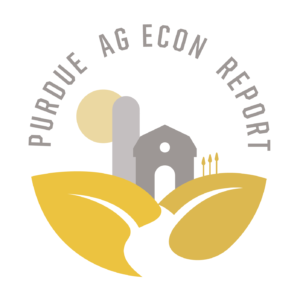Indiana Agriculture 2000: A Strategic Perspective
June 16, 1992
PAER-1992-10
Lee F. Schrader, Professor
The food and agriculture sectors of Indiana, the U.S., and the world have experienced massive changes in the past 30 years, and the pace of change has accelerated. Success belongs to those persons and firms that correctly anticipate change. Plans and investments based on today’s conditions characterize tomorrow’s also-rans. Planning depends on estimates of future conditions.
Faculty in Purdue’s Department of Agricultural Economics have written a book that provides a 10-year projection for agriculture, entitled Indiana Agriculture 2000: A Strategic Perspective. The study’s objective is to help participants in Indiana’s food and agriculture sectors plan for the future.
The authors of each segment of the study were challenged to make their projections as specific as possible, with full knowledge that there would be errors. More important, they were asked to identify key drivers of change that underlie their projections. The study’s user can modify the projections as the driving factors change in ways not now anticipated. The authors’ objective is neither to advocate a course of action nor to approve or disapprove of the situation they foresee.
Each section of the study identifies opportunities for business managers and policy makers to adapt to or take advantage of conditions expected to prevail in the 1990s. The authors identify segments or niches that provide opportunities for producers, as well as those segments of agriculture that face more challenging times. The authors also identify the positions of Indiana suppliers, producers, and processors relative to their competitors in other states and the world, and discuss reasons why their position will improve or deteriorate.
Finally, the authors have defined the food and agriculture sectors very broadly. These sectors or industries include the activities and decisions of consumers, processors, producers, and input suppliers and manufacturers. It includes the traditional livestock and crop commodity industries such as corn, soybeans, hogs and cattle, as well as horticultural and specialty crops and forestry. The events and forces that shape and affect the sector include a changing world economy, the economic and agricultural policy climate, resource and environmental concerns, new technological advances, the shape and strength of the rural community, and the changing structure of and linkages between various segments of the sector. To help public and private decision makers in Indiana’s food and agriculture sectors develop a vision for the next decade, the Ag Econ faculty present to you Indiana Agriculture 2000: A Strategic Perspective. The full report and a summary version is expected to be available by mid-July from Purdue’s Media Distribution Center.
